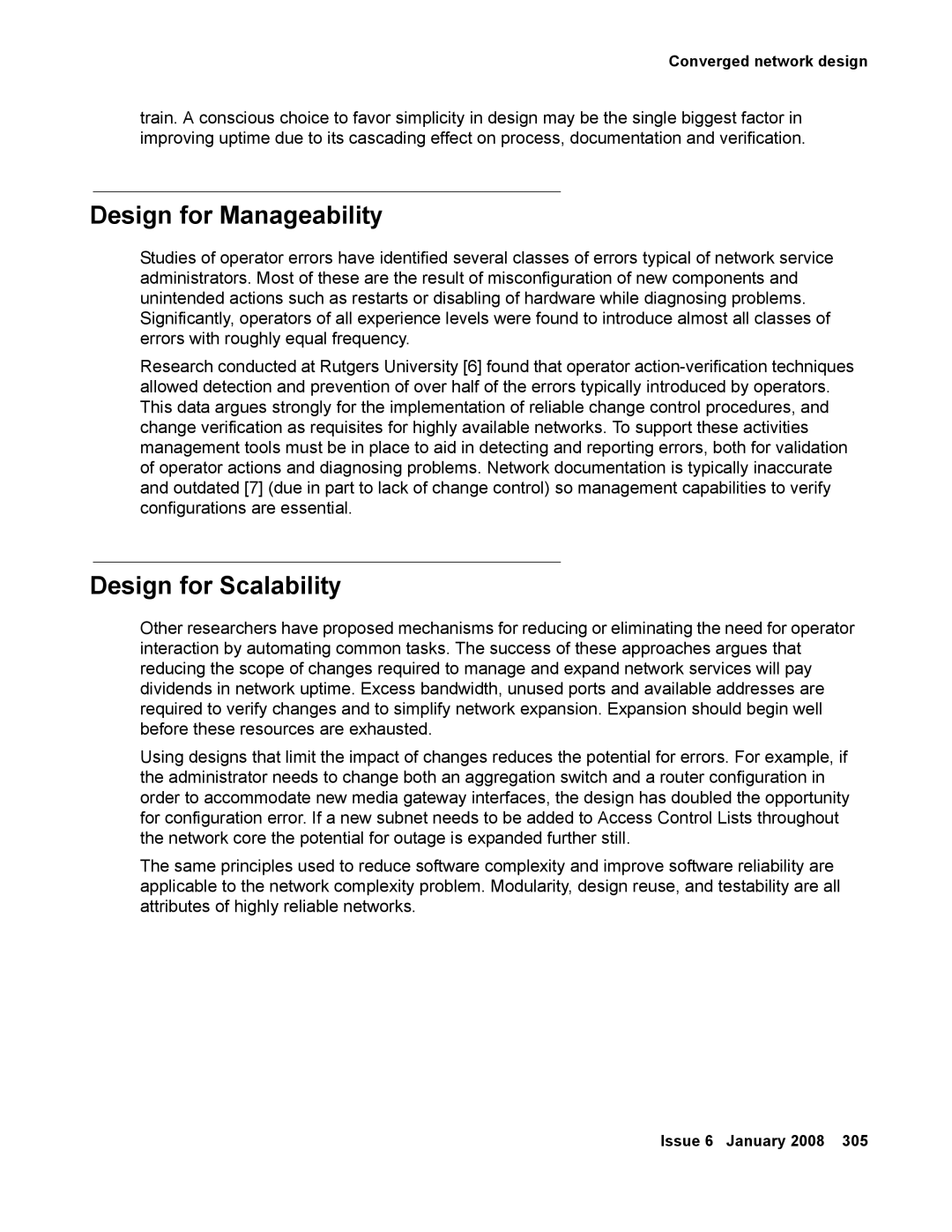
Converged network design
train. A conscious choice to favor simplicity in design may be the single biggest factor in improving uptime due to its cascading effect on process, documentation and verification.
Design for Manageability
Studies of operator errors have identified several classes of errors typical of network service administrators. Most of these are the result of misconfiguration of new components and unintended actions such as restarts or disabling of hardware while diagnosing problems. Significantly, operators of all experience levels were found to introduce almost all classes of errors with roughly equal frequency.
Research conducted at Rutgers University [6] found that operator
Design for Scalability
Other researchers have proposed mechanisms for reducing or eliminating the need for operator interaction by automating common tasks. The success of these approaches argues that reducing the scope of changes required to manage and expand network services will pay dividends in network uptime. Excess bandwidth, unused ports and available addresses are required to verify changes and to simplify network expansion. Expansion should begin well before these resources are exhausted.
Using designs that limit the impact of changes reduces the potential for errors. For example, if the administrator needs to change both an aggregation switch and a router configuration in order to accommodate new media gateway interfaces, the design has doubled the opportunity for configuration error. If a new subnet needs to be added to Access Control Lists throughout the network core the potential for outage is expanded further still.
The same principles used to reduce software complexity and improve software reliability are applicable to the network complexity problem. Modularity, design reuse, and testability are all attributes of highly reliable networks.
